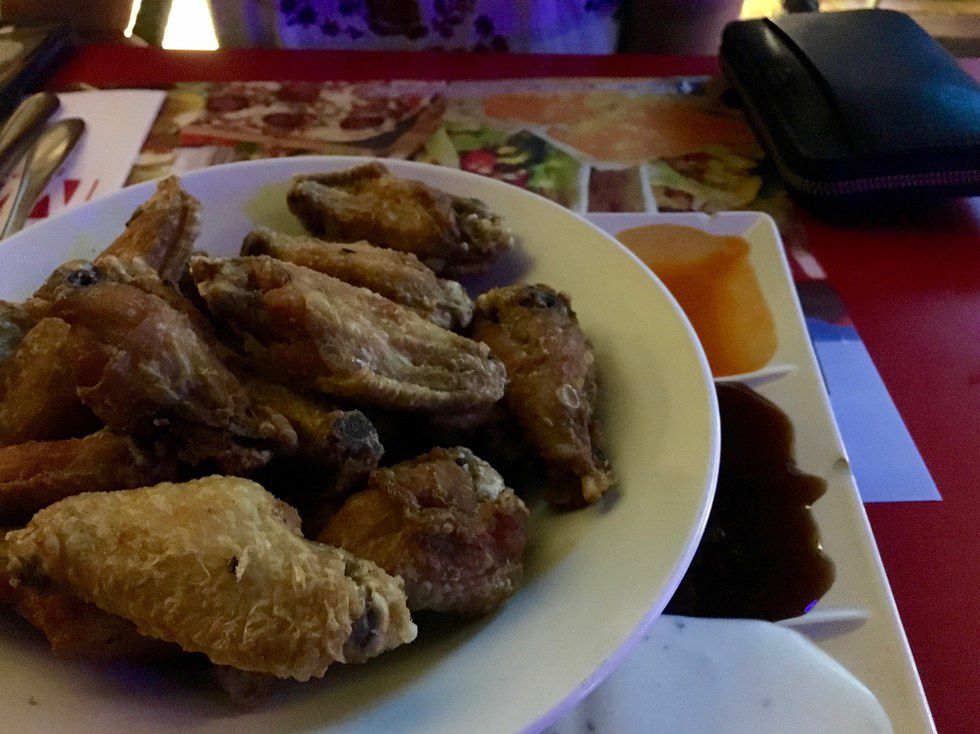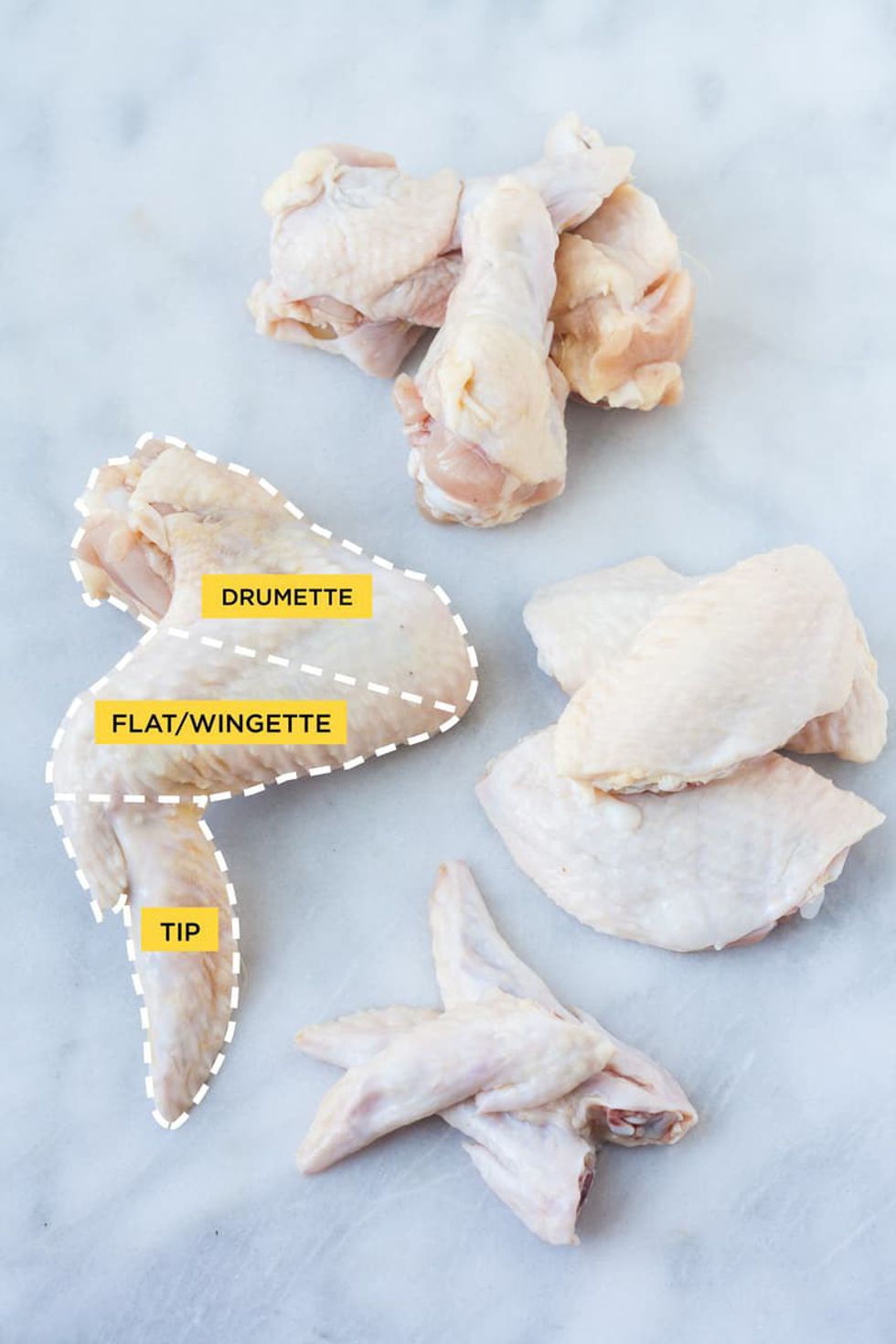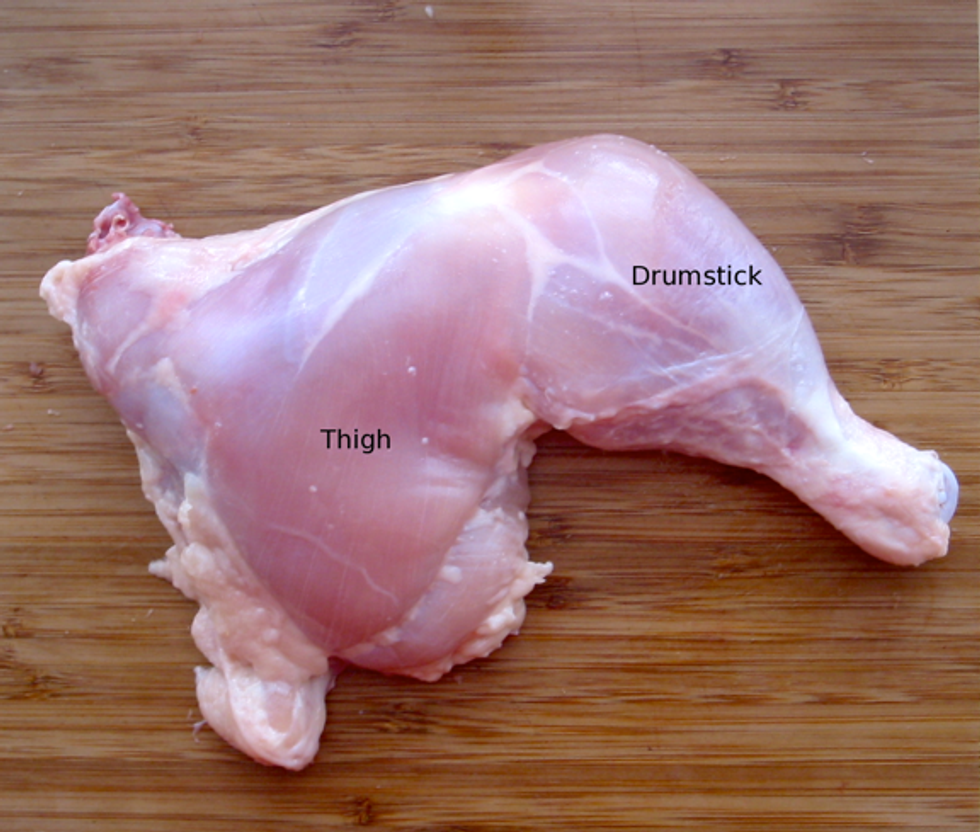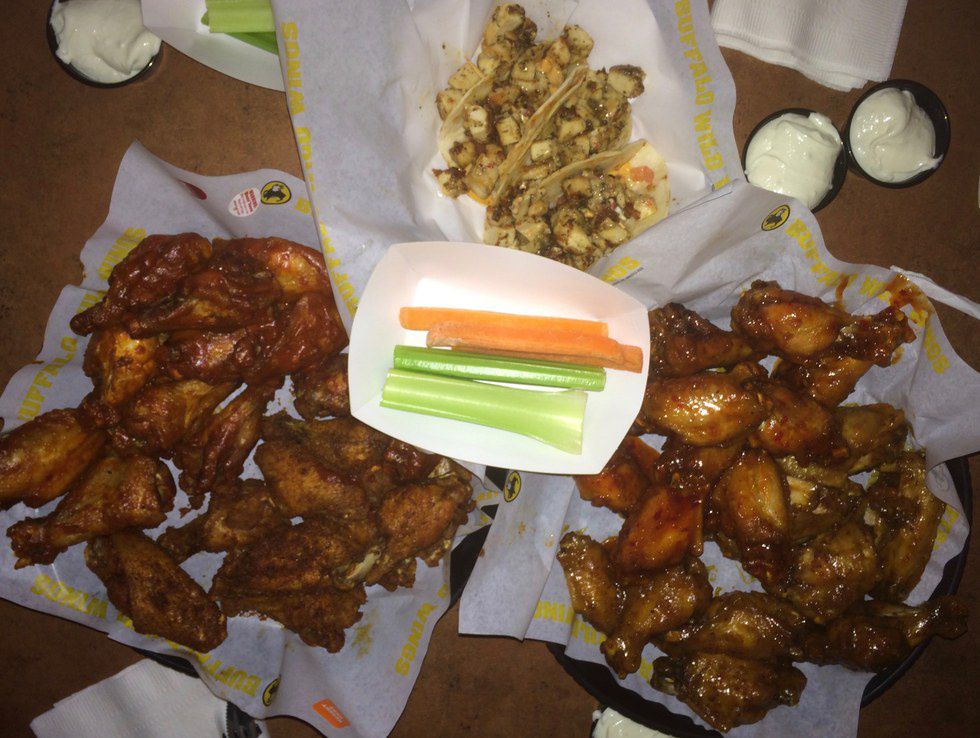Ok so if you’re going to eat something, you may as well know what you’re eating—especially if you’re planning to be picky about it.
Maybe we don’t like to actually think about what we’re eating because it may repulse us to speculate on the fact that we enjoy taking functionless wings from oversized birds, plucking off their feathers to reveal pasty bumpy skin, drenching them in their own gametes and some grains that they’d eat, and frying them in hot oil until their skin bubbles.
I can’t tell you how many times I’ve gotten complaints from guests who say they ordered chicken wings, not drumsticks, or an eight-piece order, not four-piece. In every one of these occasions, there were no drumsticks, and there were eight pieces.
A chicken wing is a homologous structure to our arms, so imagine chopping off your arm: It is a whole arm, one whole arm, but it can easily be separated into two pieces, which together comprise one arm.
One arm, two pieces; one wing, two pieces. At any wing establishment, one piece does not equal one whole wing, so one whole wing equals two pieces. Four wings may not look like much, but cut 'em up and you get eight pieces!
The two pieces of our arms also are not identical to each other. We have our forearm part with two bones, the radius and ulna, and we have our upper part with the humerus. Similarly, the two pieces of a chicken wing are not identical, but they both anatomically are the wing. The upper piece may resemble another anatomical feature of the chicken: the drumstick. It is understandably disorienting considering the upper piece is called a drumette and the lower piece is called a wingette, causing the latter to be confused with the drumstick and the former to be confused with being the only part of the wing.
However, drumsticks are typically larger than the wings just as our thighs are typically larger than our arms and therefore are not the same as the upper half of the wing.
Let’s not forget the most underrated part of the wing: the tip. I have never known a piece of such a common food to be so unappreciated that it’s not even wanted, and in many cases, it’s tossed away by the food establishment because it’s not even considered part of the wing. Sure, it can be a pain to eat—all skin and bones—but in a perfect breading and frying technique, it embodies the crisp; in a mean sauce, it captures every ingredient. Never forget the tip.
For a nation so keen on wing culture, we tend to get choked up when it comes to the technicalities. Adam Richman taught us how to eat a wing quick and clean, but what exactly are we devouring? Now you have conversation fillers for the awkward silences at wing dinners when everyone’s hands are too greasy and saucy to be on their phones.










 Energetic dance performance under the spotlight.
Energetic dance performance under the spotlight. Taylor Swift in a purple coat, captivating the crowd on stage.
Taylor Swift in a purple coat, captivating the crowd on stage. Taylor Swift shines on stage in a sparkling outfit and boots.
Taylor Swift shines on stage in a sparkling outfit and boots. Taylor Swift and Phoebe Bridgers sharing a joyful duet on stage.
Taylor Swift and Phoebe Bridgers sharing a joyful duet on stage.













